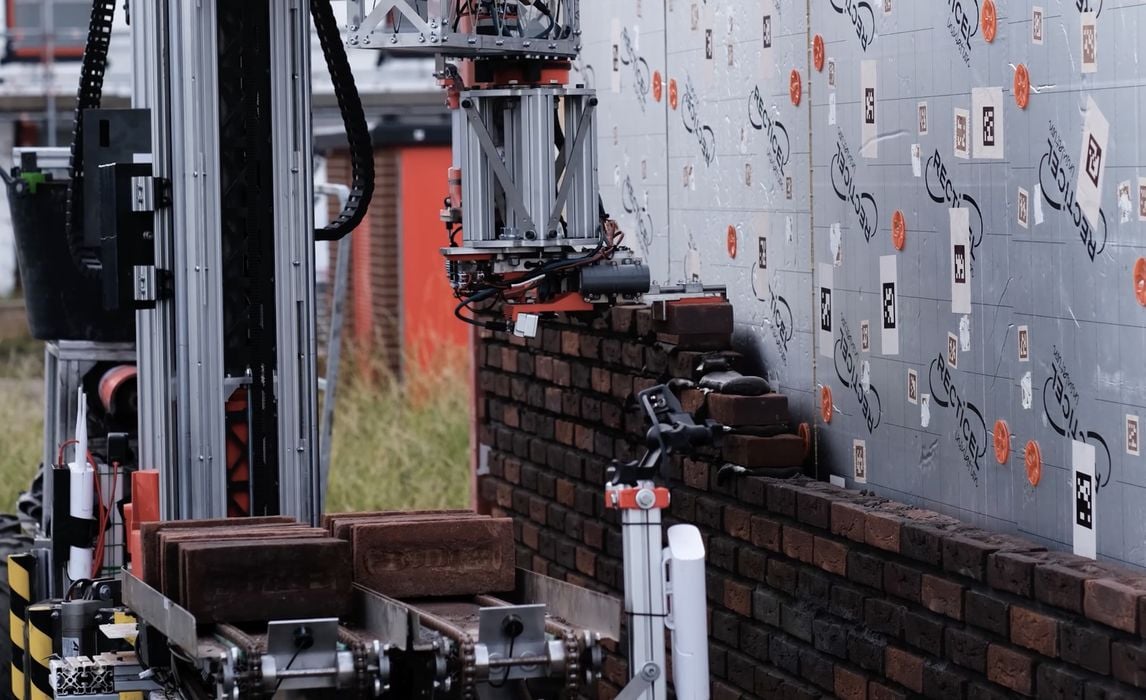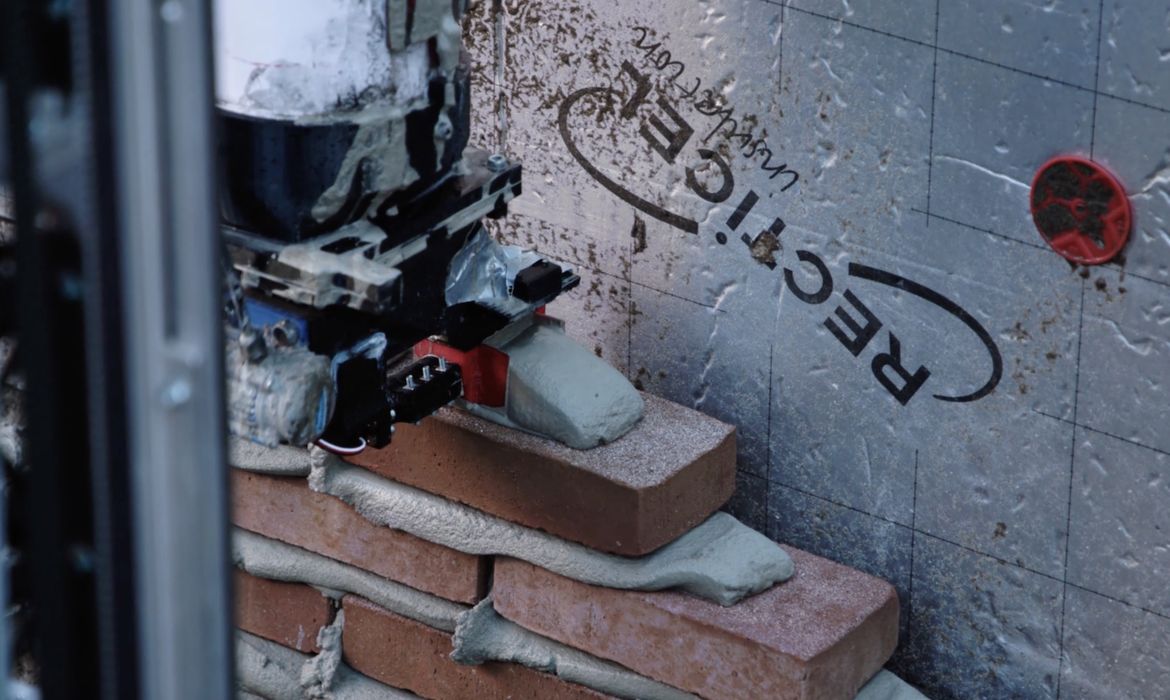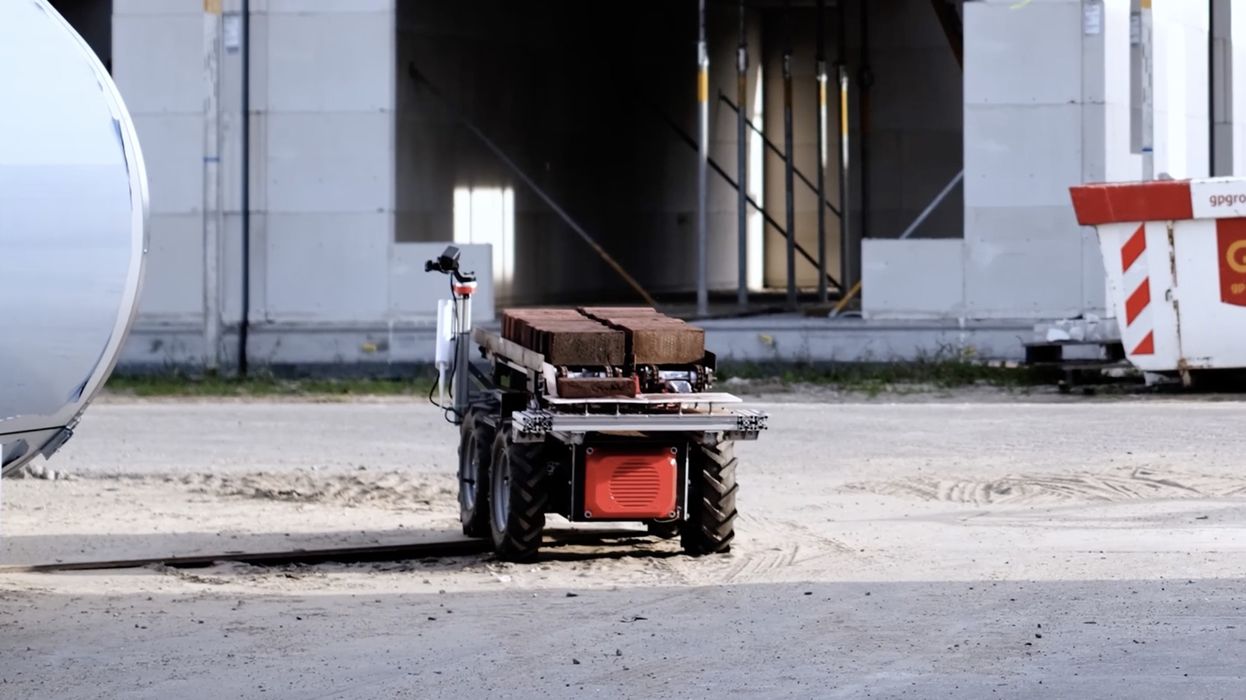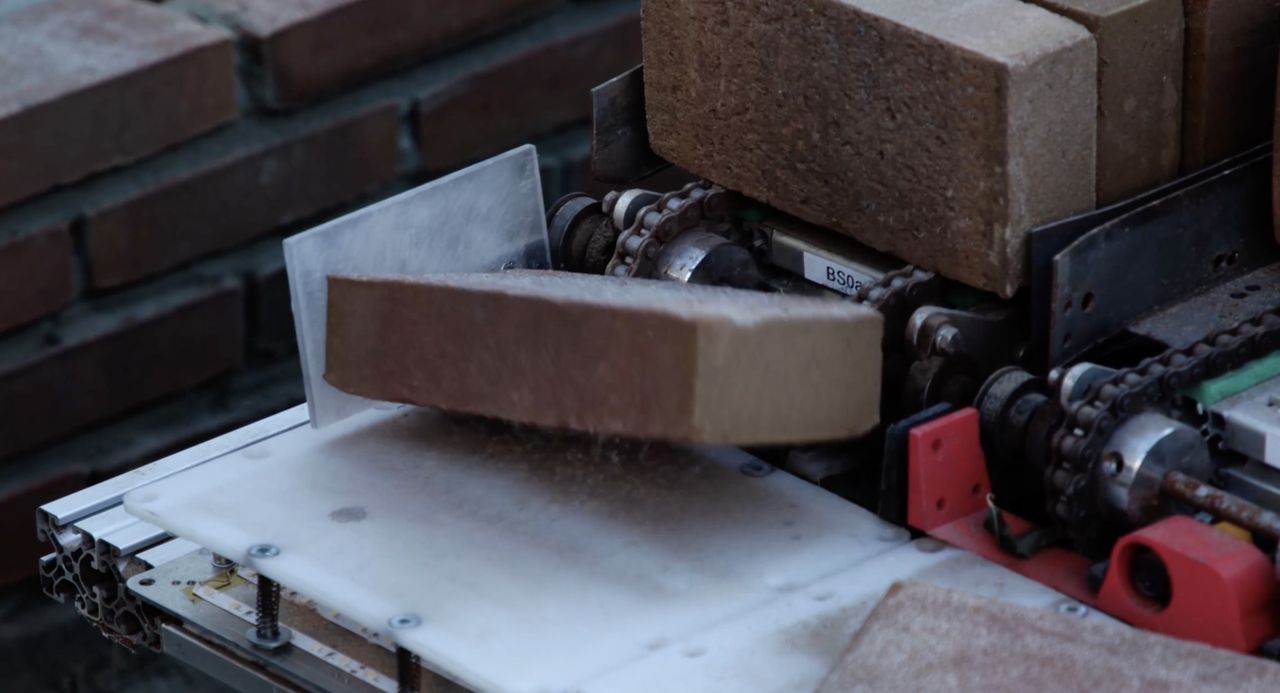
A company’s new construction device makes me wonder how we should define a 3D printer.
The company in question is Monumental, an Amsterdam-based firm that’s building a construction “printer”.
Why the quotes around “printer”? It’s because it’s quite unlike other printers you may have seen. It doesn’t extrude concrete, like most construction 3D printers; instead it lays bricks.
The company has recognized that the construction industry basically hasn’t changed much in over 100 years. Buildings take the same amount of time to erect, and often even longer. Sure, they’re more complex, but more-or-less, the same assembly techniques have been used throughout history.
They believe in a robotic future where advanced devices assemble custom buildings in very short times. Robotics allows for 24/7 operation, no lunch breaks, consistent quality and extreme scalability.

Their first product is a what seems to be a brick laying system. At top you can see part of the system in operation. The bricks are laid, along with mortar, according to the software-programmed pattern, much like a 3D printer.

The materials used in this device are mortar and bricks, but you might be wondering how the bricks are fed into the system. No, there is no requirement for workers to constantly load up the machine. Instead the bricks are delivered by a robotic system shown above.

The bricks enter the system and flow along much like an assembly line. Eventually they are picked up with a robot arm and placed on the wall being constructed.
The company seems to be successful thus far, even though they’ve been around only a couple of years. In fact, they’ve even raised US$25M in investment that should power them forward quite quite some time.
Eventually I could see them adding variants to their product line that could include other aspects of construction. For example, could they have a similar robotic system lay electrical wires in the building as it is going up?
It’s all quite fascinating, but is it a 3D printer?
It could be: it takes material and deposits it according to a 3D model. It is fully additive.
It might not be: it differs from other 3D printing processes, and the smallest bit of material, a brick, is vastly larger than corresponding materials on conventional 3D printers.
What do you think? Is Monumental’s technology a 3D printer?
I’m inclined to say, “yes!”
Via Monumental
